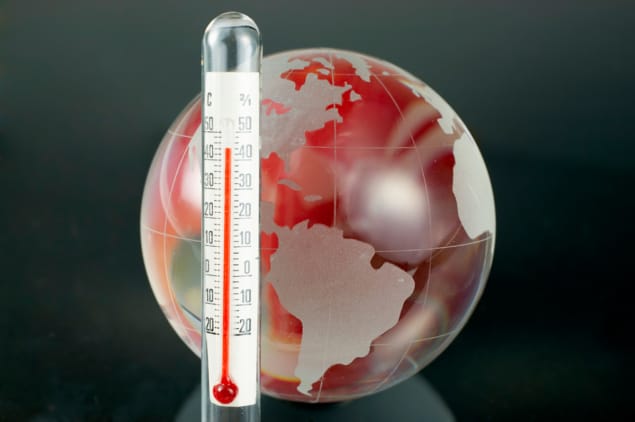
In its latest annual Renewables Global Status Report, REN21, the global renewable energy network, says that renewables are increasingly preferred for new electricity generation. Around 181 GW of renewable power capacity was added in 2018, setting a new record just above that of the previous year. Overall, renewable energy now accounts for around one-third of total installed power generation capacity worldwide and over 26% of global power supply. Nearly two-thirds (64%) of net installations in 2018 were from renewable sources of energy, marking the fourth consecutive year that net additions of renewable power were above 50%.
REN21 also notes that, as of 2017, renewable energy accounted for an estimated 18.1% of total final global energy consumption (TFEC). Modern renewables supplied 10.6% of TFEC. Traditional use of biomass for cooking and heating in developing countries accounted for the remaining share. The greatest portion of the modern renewable share was renewable thermal energy (an estimated 4.2% of TFEC), followed by hydropower (3.6%), other renewable power sources including wind power and solar PV (2%), and transport biofuels (about 1%).
Too slow
However, REN21 says it’s all going too slowly. “While there has been much progress on renewables, energy efficiency, and access to electricity and clean cooking facilities over the past decade, the world is not on track to meet international goals, most notably limiting the average rise in global temperatures to 1.5 degrees Celsius as stipulated under the Paris Agreement,“ the organization says. It warns that in terms of energy: “the overall share of renewable energy (both modern renewables and traditional biomass) in TFEC has increased only gradually, averaging 0.8% annually between 2006 and 2016. This modest rise is due to a negligible change in the traditional use of biomass coupled with overall growth in global energy demand since 2006 (annual average increase of 1.5%). Despite strong demand growth in modern renewables, especially renewable electricity, these two factors have slowed gains in the combined share of renewable energy in TFEC“.

Oversizing renewables to avoid shortfalls
The key problem is that, in 2018, global energy demand increased an estimated 2.3%, the greatest rise in a decade. This was “due to strong global economic growth (3.7%) and to higher heating and cooling demand in some regions”, REN21 says. “China, the United States and India together accounted for almost 70% of the total increase in demand. Due to a rise in fossil fuel consumption, global energy-related carbon dioxide (CO2) emissions grew an estimated 1.7% during the year.“
Best foot forward?
REN21 is not alone in warning that progress on energy, as opposed to just electricity, is too slow. Many others have said the same: see the International Energy Agency (IEA)’s comments below. Energy demand is booming so much, especially in transport, that emission savings in other sectors, and from the spread of renewables, are being overwhelmed. Ramping up renewables faster in all sectors will help, but we also have to get demand tamed — and cut back. Some, logically enough, want to focus on transport but that’s maybe the toughest nut to crack. Some progress is being made, with plans for banning fossil-fueled cars, but if the result is just more electric vehicles (EVs) that may not help too much. Private cars are much less efficient than public transport; do we really want to use precious green power to keep cars running?
Focusing on green heat might be an easier and more productive option. For solar especially, biomass maybe less so, given its eco/land-use issues, although if used in combined heat and power (CHP) plants, linked to heat stores and district heating networks, you get better efficiency. However, many plans at present look to using green power to run heat pumps: will there be enough for that and for EVs? Waiting in the wings, the nuclear industry sees all this as an opportunity to get back in the game, with power, but also maybe heat and hydrogen. While the fossil fuel lobby looks to carbon capture and storage (CCS), or even better carbon capture and utilization (CCU), to let them stay in business. The race goes on…

Pushing renewables ahead
While renewables do seem to be winning in supply terms, as the IEA noted in a paper produced for the G20 Summit in Japan, that still means that “despite the large investments in wind and solar over the last ten years, these efforts have only compensated for the low growth in other sources such as nuclear and hydro“. The IEA continues: “even if wind and solar PV deployment could be accelerated, other low-carbon technologies like dispatchable renewables, nuclear power and CCUS also need to be expanded at massive scale to decarbonise the power sector“.
Well, maybe. Certainly, there would be room for more wind and solar and for firm power from biomass, hydro and geothermal, as well as cyclic, but predictable, power from tidal projects. The IEA, however, is not convinced. “The level of additional renewable generation sources required to achieve the Sustainable Development Scenario is already extremely high,” it says. “Expanding the level even more to make up for the lack of growth or decline in nuclear power or CCUS implies enormous challenges in terms of not only additional costs but also land availability and local acceptance.” Surely worth a try though, with, as I have reported regularly, several academic scenarios suggesting that a 100% renewable energy mix is credible by 2050.
It gets worse
That is not the message that you get from the new review of scenarios produced by Resources for the Future. Its Global Energy Outlook (GEO) compares forecasts through to 2040 from companies, government bodies, and expert organizations such as the US Energy Information Agency, BP, Exxon, Shell, the IEA and others. None of the “100% by 2050“ NGO/academic studies are, however, included. The result is that, even under the most optimistic scenario looked at, renewables only supply 31% of global primary energy by 2040.
And it gets worse. As Bloomberg has noted, investment in renewables is falling, though Bloomberg says it may pick up, and it’s worth pointing out that, cumulatively, there is still significant capacity growth. Indeed, REN21 says that, as a percentage of total energy consumption, modern renewables still expanded by an average of 4.5% over the last ten years, whereas global energy demand only rose by 1.5% over that period. It may be that continued renewable capacity growth can still be achieved with less investment, since technology costs are falling. Nevertheless, obviously enough, if investment was expanding again, capacity growth would be even faster. If demand keeps rising then that will be vital, but we should also be curtailing demand growth.
Renewables in cities
Meanwhile, moving the scene to another part of the story, REN21 has produced a study of renewable energy use in cities. It says there are now over 100 cities that get 70% or more of their electricity from renewables. Of course, not all of that will be generated inside cities. Given the high population density, there will not be room for enough PV arrays and the like to meet all a city’s energy needs from sources within its boundaries. So much of it will have to be imported from rural or, if available, offshore projects. That will have some interesting implications. Cities are already dependent on rural, and offshore, areas for food, and must import water from rural/ mountainous areas. Now they will have to import a lot of their energy from them too. See my chapter in the new Routledge book Sustainable Cities Reimagined. This book, edited by Stanislav Shmelev, looks at urban sustainability performance using a multi-criteria approach, covering environmental, economic and social indicators, to assess progress and policies in cities around the world, with renewables and smart energy systems to the fore. With more people now living in cities and energy demand rising, for example to power high-rise building air-conditioning as global warming impacts more, the issues the book raises are going to become even more urgent.



